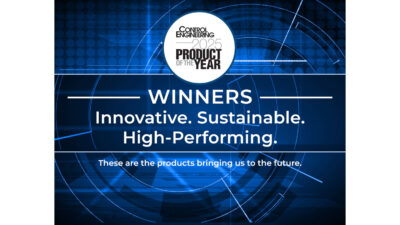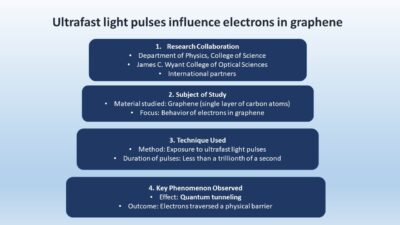In the hard-wired world of traditional instrumentation, getting power to individual devices wasn’t an issue. Either mains supply could be brought to a transmitter, or a fieldbus connection carried needed current. The only people who worried about remote instrumentation were involved with isolated installations such as oil wellheads or the like.
In the hard-wired world of traditional instrumentation, getting power to individual devices wasn’t an issue. Either mains supply could be brought to a transmitter, or a fieldbus connection carried needed current. The only people who worried about remote instrumentation were involved with isolated installations such as oil wellheads or the like. Mechanical instrumentation could fill most requirements, as long as there was someone to read it periodically.
That’s all changed. A given plant can be filled with “remote” instrumentation, even if it’s in an area with a dense equipment population. The growing number of wireless options has given rise to different and more self-contained power sources that do not depend on mains, fieldbus, or loop supply for operation. Since a major selling point for wireless instrumentation is eliminating wire’s cost, users and vendors are looking for different approaches from the traditional. Using energy harvesting techniques, engineers are finding sources of current in many places that they had never considered before.
In many respects, the development of wireless technology and self-contained power sources has advanced in parallel. Wireless equipment manufacturers realized that some types of instrumentation are easier to adapt than others, which is why power-stingy devices, such as temperature sensors, were mated with radio transmitters early on. The advantage of wireless communication is reduced with each power cable run to an instrument. Even so, in many plant environments the availability of a 120 V ac line may be a minor issue compared to running signal cable to a distant I/O point. This thinking has been the rationale for wireless mesh networks using powered routers in the field.
Changes in instrumentation
While changes in power supply methods have occurred, a more fundamental shift has been happening in the instrumentation and wireless transmitters. Device designers, in rethinking what instruments do, have found ways to make power utilization more efficient.
In a wired world where mains power is available and devices communicate via direct I/O wiring or fieldbus, instrumentation can report continuously. Whatever flow, pressure, or other variable, the data supply never stops. But the standard 4-20 mA signal can consume a large amount of current from a battery. A continuous 20 mA load will discharge most batteries in a matter of days. However, if a measurement can be taken at some interval, the device can operate intermittently and save power. Intermittent communication has been critical for the new wave of practical wireless instrumentation.
Some process variables are critical enough to merit continuous monitoring, and those will likely be hardwired. Other points may only need checking once every few seconds, every minute, every hour, or longer. If a device can wake itself up, take a single reading, transmit the number, and go back to sleep until it repeats the process in another hour, the power consumption can be cut by 99% compared to continuous operation. Such a device, using current designs and an appropriate battery, could operate for 20 years without maintenance.
“Wireless communication has made power the critical issue,” says Rob Conant, vice president, marketing, Dust Networks. “It’s created a whole new paradigm for designing the sensor.” Dust Networks has made significant advances in creating extremely efficient communications technology for industrial instrumentation. Its embedded radios are capable of turning on, uploading a process variable, transmitting the variable, and shutting off all within 10 ms. Receivers are synchronized to turn on at the same time to capture the signal. In a normal duty cycle where the device updates every 10 seconds, the equipment is in sleep mode 99.9% of the time. This type of power utilization makes self-contained supplies very practical.
Exotic batteries
Alternative power approaches also have to accommodate the desire to eliminate any need for maintenance. An instrument that has to have its batteries changed once a month or even once a year simply won’t get installed unless its need is very critical. Plant operators want devices that require virtually no attention, with battery life measured in years. While rechargeable batteries for laptops and hybrid cars get much attention, technologies for throw-away cells have improved considerably. Standard alkaline batteries (alkaline-manganese dioxide) are adequate for most consumer applications like flashlights and portable electronics, but they can’t cut it in the demanding world of industrial instrumentation.
Operating devices intermittently, turning them on only when necessary, can drastically decrease power consumption. Dust Networks uses this method with transmitters and receivers, synchronizing communications so both devices can be in sleep mode as long as possible. This diagram illustrates the interaction between an end node with a sensor and a routing node that relays the signal to a gateway. The routing node consumes more power since it has to receive and transmit, but this is minimized by reducing the time spent receiving.
Batteries die for two reasons. First, they self-discharge, meaning they simply go dead sitting on the shelf. Manufacturers rate designs and know how long they can last in storage, hence the “use-before” date on most packaging. The range between different types is huge, with more sophisticated chemistries lasting longer. Second, when their energy is consumed they die. Some inexpensive designs experience this as a gradual, consistent slope to zero. Others maintain a fairly constant voltage until they reach exhaustion, and the voltage drops very quickly.
In demanding industrial applications, lithium formulations largely have taken over due to their high power density and long life spans. There are many types, and capabilities vary widely. The lithium-manganese dioxide batteries available at your drugstore will certainly outperform their alkaline competitors in a digital camera, but they pale in comparison to more advanced technologies. The type commonly used in today’s wireless offerings is lithium thionyl chloride (Li/SOCl12). This term only describes the chemistry; there are several ways of configuring batteries internally. The most popular now is the bobbin type, due to a beneficial combination of performance trade-offs.
Lithium thionyl chloride batteries are very powerful. While alkaline batteries put out a maximum of 1.5 V, the lithium variety put out 3.6 V and maintain this consistently until they reach the exhaustion point. They can operate at temperatures from -55 to 150 °C (-67 to 302 °F) and have a self-discharge rate &1% per year, giving a possible life of 20+ years.
Can a battery really last 20 years? “Yes,” says Sol Jacobs, vice president & general manager of Tadiran Batteries. “We know of water meter-reading devices that have been in use for 23 years with the original batteries, and the cells that we made 20 years ago aren’t as good as the ones we make today.”
Of course, any battery has limits, so it is important to match the selection to the application. Since the power output of batteries is well quantified against service life, it is not difficult to predict lifespan based on loading. Supply and demand can be matched precisely to achieve desired operating life. However, if circumstances change, the original calculations may not apply. For example, if you have a wireless temperature sensor that is designed to transmit its reading once per hour, and you reprogram it to send out a reading twice per minute, battery life will decrease proportionally.
Solar collectors
Photovoltaic panels have been around for decades and are often the first choice for remote equipment of all types when used in the right location. Their performance depends on having sun, so some areas are better than others. Panel suppliers have studied the typical weather and sun availability and they characterize locations by their winter peak sun hours, which is effectively a worst-case scenario for sun availability.
Panels are made in all shapes and sizes, use a variety of technologies, and come from a large number of manufacturers. Efficiencies range from 4-24%, with a correlation of price to efficiency. Most cost-competitive technologies have around 15% efficiency. Panels can be linked together to provide any required voltage and amperage. Under good sun conditions they can put out about 12 W per square foot, but since the availability of sun determines actual output, it’s difficult to give rules of thumb on how big a set has to be for a given application.
Solar locating guides calculate available energy based on average “sun hours,” or the number of hours per day where irradiance is at least 1,000 W per square meter. This map is based on historical weather data for summer months.
For remote instrumentation, a typical installation includes panels feeding a controller, which regulates charging a group of batteries. The instrumentation and transmitters are powered by the batteries and not the cells directly. The combination of panel output and battery size should be able to provide constant power, even during extended bad weather or snow, so the same installation in Phoenix can have a smaller panel and fewer batteries than Seattle.
“We design the system to operate on the worst day of the worst month, so everything else is gravy,” says Rich Griswold, industrial sales manager for Kyocera Solar. “If the batteries are fully charged, the regulator sends energy back into the panel where it is dissipated as heat.” Equipment suppliers design pre-packaged systems, suited for the site and application, eliminating the need to source a variety of items.
This approach is best suited to situations where there is a cluster of devices that can be fed from a common source and where power consumption is relatively high. Photocells are bulky, somewhat expensive, need occasional low-level maintenance, and require protection from damage. Nonetheless, panels can last decades, and in the right applications, easily pay for themselves.
Power scavenging
The idea of scavenging environmental energy sources such as vibration and heat has been around for some time. Applications are becoming more practical. An instrument near a compressor, for example, could have its supply fed by a small generator that produces current by harnessing vibrations from the machinery.
Perpetuum Ltd. is currently producing units for sale while it develops the technology. Its PMG7 vibration microgenerator is available and newer models are in the pipeline. These units don’t produce a huge amount of energy. A lithium battery like those mentioned above puts out about the same voltage (~3.4 V) so they can be used in similar applications. Current output for a microgenerator can be as high as 1.2 mA, which typically feeds a capacitor to provide additional surge capacity for the instrument.
Microgenerators operate best at specific frequencies, so they are tuned to respond to vibrations typically created by 60 Hz induction and synchronous motors commonly used in industrial applications. When installed, the tuning can be adjusted to maximize output for the specific installation. Units are very small (roughly the size of half a C-cell battery), can be installed in any position, and require no maintenance. They do depend on the equipment running, so if the host compressor or other equipment shuts down, the power stops.
Acceptance of this technology will depend on reliability and cost effectiveness. With present technology, the power output of a microgenerator could be duplicated with one D-cell lithium thionyl chloride battery. With a 0.5 mA continuous load, within the comfort level of either device, the battery could last 30,000 hours, so power harvesters will have to compete with this type of performance.
With experiments continuing on wireless transmission of power, the trend toward self-contained and wireless instrumentation will continue, which will pressure equipment designers to improve efficiency and create new ways to collect and communicate data with minimal power use. The process has just begun and there is much to gain with new developments.
Author Information
Peter Welander is process industries editor. Reach him at [email protected] .



